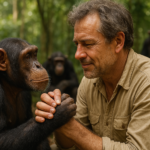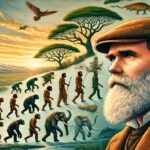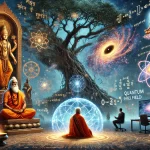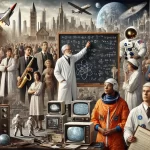Introduction to Genes and Behavior Understanding the Basics of Genetics Genetics is the study of genes, the fundamental units of heredity that dictate the biological makeup of all living organisms. Genes are segments of DNA (deoxyribonucleic acid) that contain the instructions for building proteins, which perform a vast array of functions in the body. […]
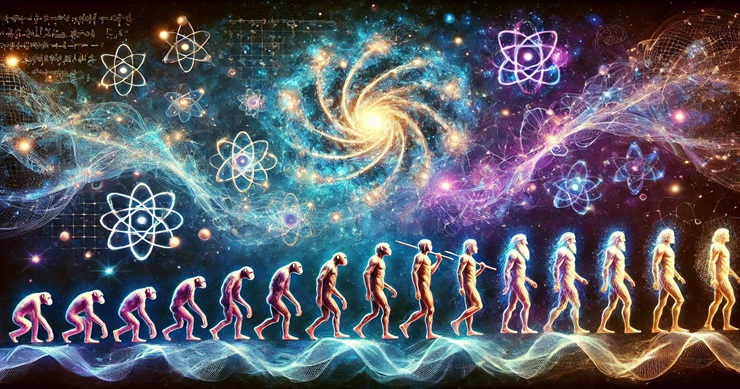
Beyond Survival: How Cooperation Shapes Species
Introduction The Importance of Cooperation in Nature In the grand tapestry of life, cooperation is a thread that weaves through the fabric of countless species, binding them together in a complex web of interdependence. While Charles Darwin’s theory of natural selection emphasized competition as a driving force of evolution, modern science has revealed that […]
Quantum Healing: A Modern Approach to Ancient Practices
Bridging Ancient Wisdom with Contemporary Science Quantum healing, an integrative approach to wellness that combines ancient practices with modern scientific insights, represents a fascinating convergence of traditional wisdom and contemporary advancements. This holistic method emphasizes the interconnectedness of the mind, body, and spirit, suggesting that by altering our mental and emotional states, we can profoundly […]
David Attenborough’s Life in Color – Issue 107: The Edge
At the Edge of Nature and Quantum Thought Exploring David Attenborough’s Vibrant Journey Through Life and the Quantum Mind Debate David Attenborough’s “Life in Color – Issue 107: The Edge” captivates us with its breathtaking visuals and profound narrative of the natural world, urging viewers to see beyond mere beauty. This issue, showcased on […]
Unraveling Darwin’s Legacy: How Evolution Shapes Our World
Darwin’s Legacy Overview of Charles Darwin’s Contributions Charles Darwin, born on February 12, 1809, in Shrewsbury, England, is one of the most influential figures in the history of science. His groundbreaking work laid the foundation for our understanding of biological evolution. Darwin’s early fascination with the natural world led him to pursue a career in […]
Patanjali Yoga Sutras
A Comprehensive Exploration of Patanjali’s Timeless Yoga Philosophy Introduction “Unlocking the Wisdom of the Yoga Sutras: A Timeless Guide to Consciousness and Liberation” For centuries, seekers from all walks of life have turned to the Yoga Sutras of Patanjali for guidance in their quest to understand the deeper dimensions of consciousness and the nature […]
Reincarnation as the Ultimate Deterrence
How Scientific Inquiry, Vedic Wisdom, and Quantum Mechanics Converge to Illuminate Our Future Lives and Planetary Destiny In our quest for understanding the universe and our place within it, few ideas have captured the imagination as powerfully as reincarnation. If the concept of reincarnation were to be scientifically proven—that our consciousness, or soul, survives […]
The Illusion of Existence: How Being Made Out of Nothing Dictates Reincarnation
Bridging Quantum Mechanics and Vedic Wisdom to Unveil the Eternal Cycle of Life Introduction The nature of existence has fascinated humanity for millennia, and modern science now converges with ancient wisdom to challenge our very understanding of reality. At the heart of this inquiry is a profound assertion: what we experience as “something” is, […]
The science of consciousness: The great transformation in the twentieth century brings more questions than answers
Exploring the shifting landscapes of society, science, and consciousness in the twentieth century The twentieth century stands as one of the most tumultuous eras in human history—a period marked by rapid industrialization, technological breakthroughs, and seismic shifts in cultural and philosophical thought. This blog post examines how these transformations, while ushering in unprecedented progress, […]
Art, Faith, and The Koko Lion: Flocks, Schools, and Spiritual Evolution (It’s a Revolution)
How Art, Faith, and Nature’s Rhythms Inspire Spiritual Evolution The interplay of art and nature forms a powerful metaphor for spiritual evolution—a theme that resonates throughout the curated reflections on “Art, Faith, and The Koko Lion: Flocks, Schools, and Spiritual Evolution (It’s a Revolution)”. In the original post, the author delves into how natural […]


